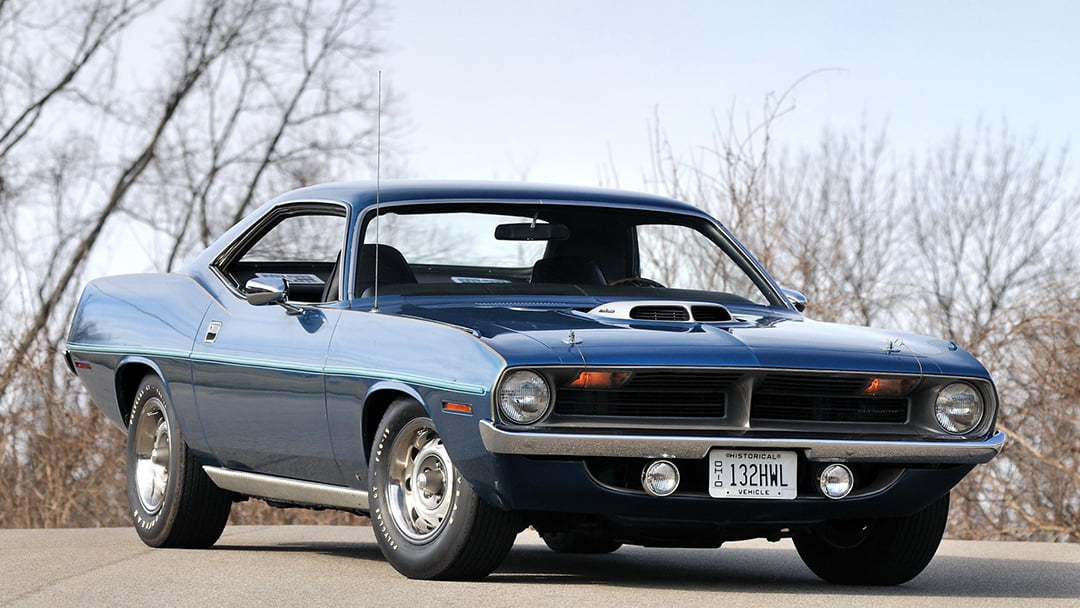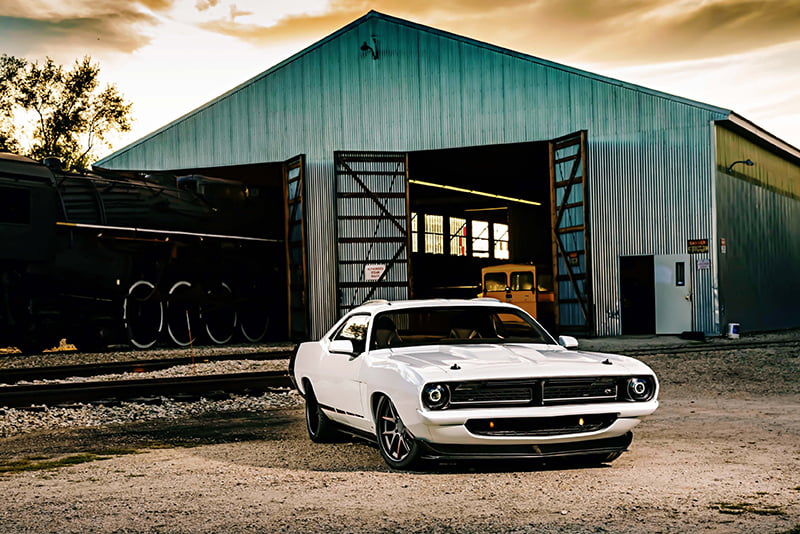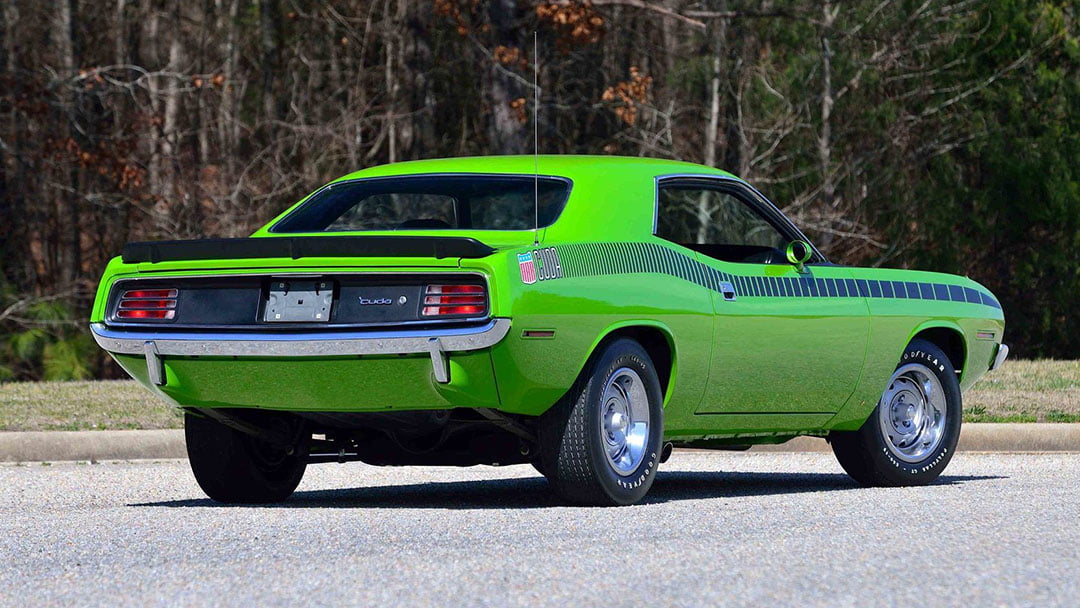First introduced in 1964, the Plymouth Hemi Cuda is regarded as the manufacturer’s version of the ‘pony car’ – but how did it compare to its peers at the time?
Although the exact definition of a muscle car has long been debated by industry experts and automotive enthusiasts alike, muscle cars often have a combination of the following characteristics –
- A large V8 engine in the most powerful configuration offered for a particular model
- Rear-wheel drive
- Manufactured in the United States in the 1960’s or early 1970’s (the specific year range of 1964-1973 is often used)
- A relatively lightweight two-door body (opinions vary as to whether high-performance full size, compact and pony cars qualify as muscle cars, as some claim that only mid-size cars can qualify)
- An affordable price range, even as a collectors item
- Being designed for straight-line drag racing, while remaining street legal
Although the best muscle car ever released is a hotly debated topic with different answers depending on who you ask, some of the most revered include the Dodge Challenger, Ford Mustang, Chevrolet Camaro, and the Dodge Charger, who were all iconic releases during what can only be dubbed America’s automotive ‘golden era’ of the 60’s and 70’s. However, the Plymouth Hemi Cuda is often forgotten when we think of America’s best muscle cars – and yet it still commands some of the highest recorded sale prices today.
Introducing The Plymouth Hemi Cuda To America
Although the 1964 Ford Mustang is regarded as the original ‘Pony Car’ – meaning a smaller variation of the traditional muscle car – the first Hemi Cuda was technically released in the same year in 1964 as the third generation of the Plymouth Barracuda.
The bigwigs at Plymouth knew that the soon to be released Mustang was set to become a success. With the competition over at Chevrolet already reaping the rewards from the Corvette, Plymouth were all too aware that they had to release their own muscle car – and soon. By taking the rear end of the Mustang and combining it with the rear windshield of the Corvette, Plymouth weren’t all that fussed about individuality for the new Barracuda, and instead focused on creating an automobile that simply performed well both on the street, and on the books. Originality was so far away from being a priority, that Plymouth even advertised the Barracuda as an extension of the existing Valiant line, which was a moderately successful compact car.

While the second generation of the Barracuda had started to become slightly more individualised, it was still largely based off of the Valiant line. The Barracuda wasn’t taken seriously as a muscle car until a run of fifty cars were sent to Hurst Performance in 1969 to be prepped for the NHRA and SCCA racing season. All fifty of the cars were equipped with the 426cid Hemi engine – the first ever from Plymouth – and fitted with fibreglass bodies to lighten their loads. Of course, they were completely illegal on the streets, which only added to their appeal.

Thankfully, by the time the third generation of Barracudas were released, they had finally earned their status as a serious contender in the world of muscle cars. The Plymouth Barracuda was sold with the same body as the Dodge Challenger from 1970-1974, but was offered with six different engine choices: a 340cid, a 383cid, a 440cid Magnum, a 440cid six-barrel, and the 426cid Hemi. However, only the more performance-oriented models were sold as a Plymouth Hemi Cuda, which is why they are commonly mistaken for standard Barracudas even today.
 Your Guide To Everything Classic Cars
Your Guide To Everything Classic Cars
Finding a fellow vintage auto enthusiast can feel a bit like finding a needle in a haystack, but rest assured that Classic’s Garage understands the thrill more than most. Having spent forty years collecting anything and everything from matchbox cars to hub caps, he’s successfully followed his passion to source, collect and stock beautiful and low mileage classic automobiles from around the world. With extensive experience in the automotive industry, it was only a matter of time before Wayne expanded on his love of vintage, iconic vehicles to share his knowledge and passion with the public.
Although his passion is for automobiles built before 1978, with a particular love for Buicks, Cadillacs, Lincolns, Oldsmobiles and even Fords, Wayne is just as passionate about the stories of the owners. Just like the cars, he has found that his fellow classic car enthusiasts all have wildly different attractions and logic behind their passion or hobby, and this often translates into how the car is presented. If it’s even remotely different, rare or just plain unusual, Wayne will overcome the relevant logistical and geographical challenges of bringing the cars to his showroom in Australia.
Classic’s Garage is a showroom conveniently located at Seventeen Mile Rocks, that specialises in the restoration and sales of vintage automobiles. If you’re on the hunt for Brisbane classic cars – quite simply, Wayne is your man. If you would like to arrange a viewing or inspect any other of our classic vehicles, please get in touch with us today.


 Your Guide To Everything Classic Cars
Your Guide To Everything Classic Cars